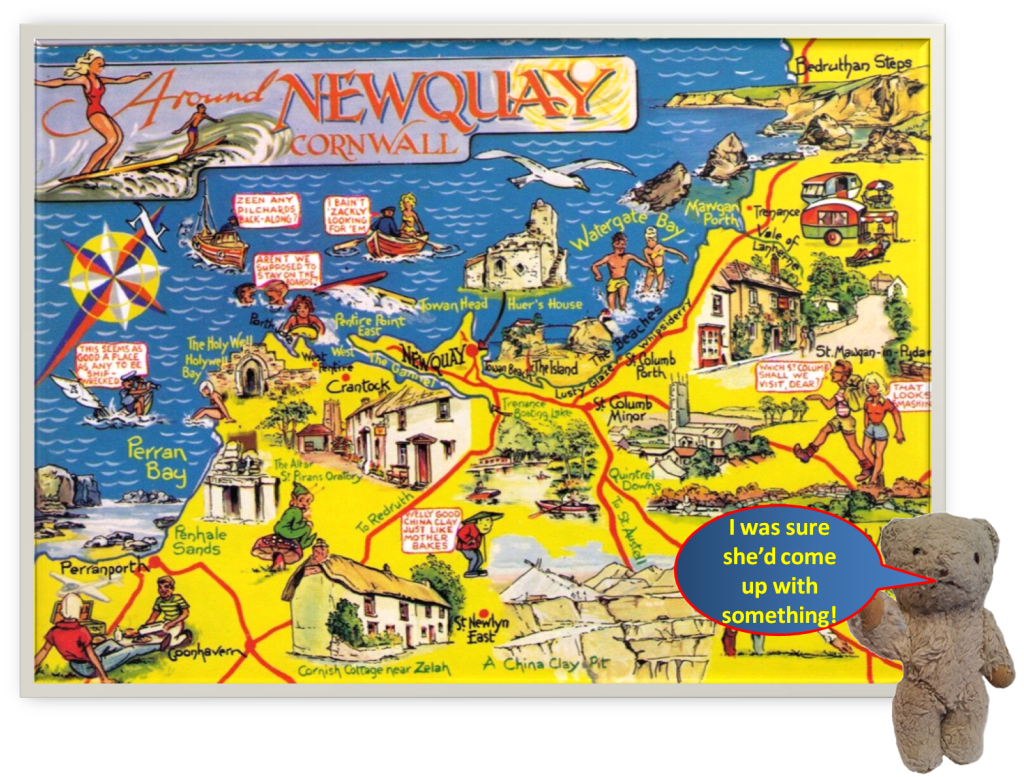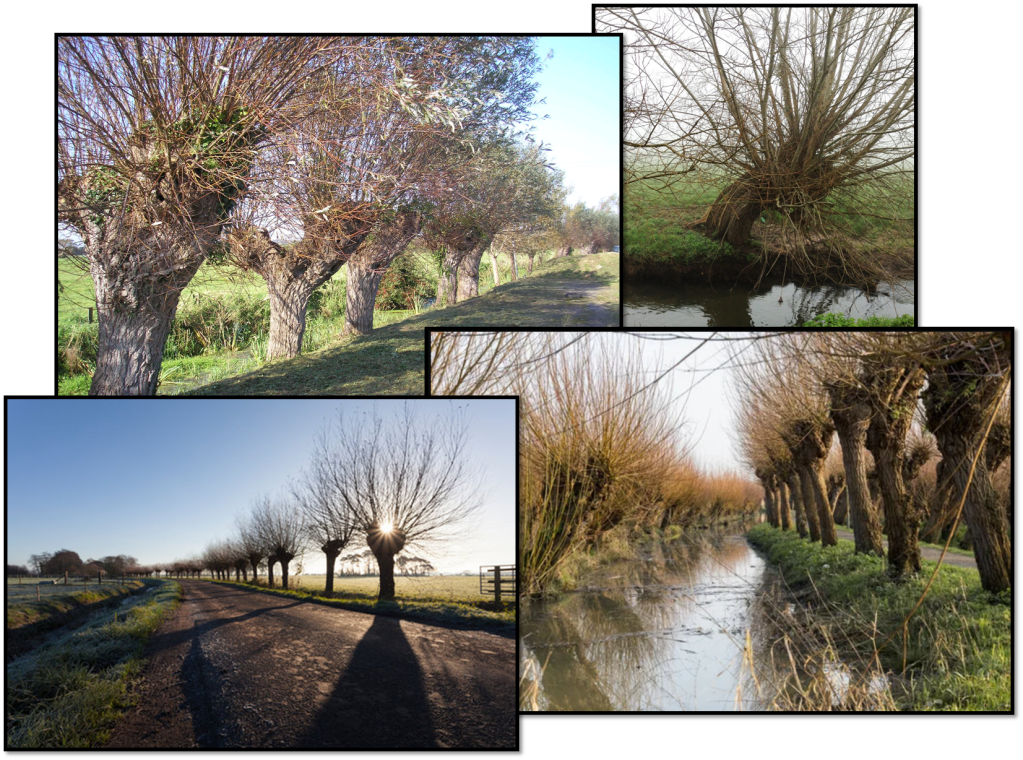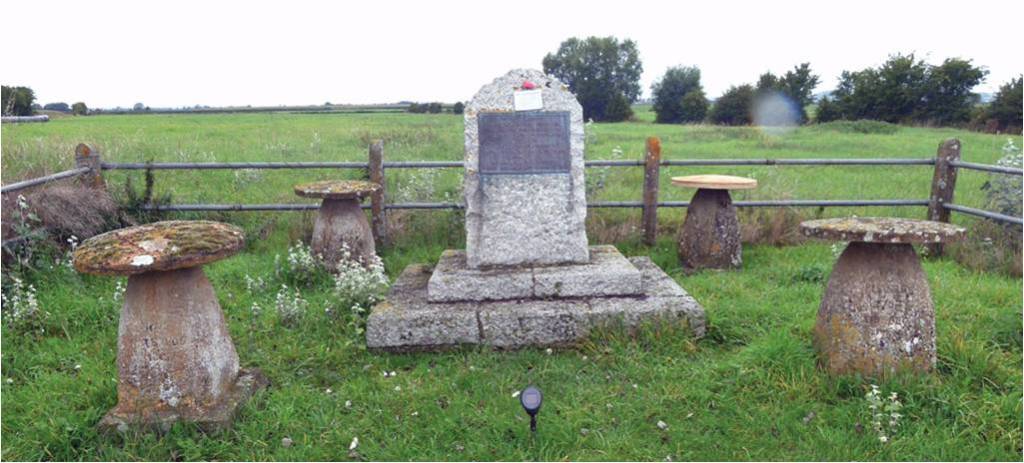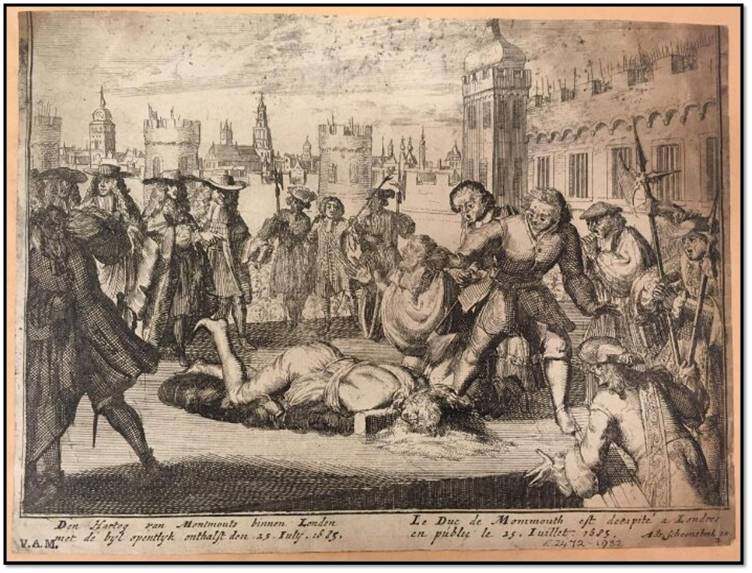We enjoyed our trip to Germany so much that it didn’t take us long to decide to go on holiday with the same company again. This time, however, we were going to stay in the UK and have a five-day holiday in Cornwall, staying at a hotel in Newquay and including a full-day trip to Falmouth and a half-day trip to Padstow.

Now me and Granny Betty had never been to Cornwall, but Mum had been three or four times already – including a week in Newquay when she was younger – and so she knew her way around fairly well. And, although she’d nothing against Falmouth, she could think of other places that we’d like better – if only she could think of some way of getting us there.

So, being Mum, she put her thinking cap on and, after a few minutes, she came up with the bright idea of finding a car-hire company in Newquay and hiring a car for a couple of days, which, as we were going to be there in the quiet season, wouldn’t be all that expensive…

First we had to get to Newquay, however, a journey of over 300 miles/480 kms from Granny Betty’s house in Yorkshire. And, because it was so far, we had a long comfort stop at Sedgemoor Services on the M5, so we could all stretch our legs and have some refreshments – and the coach-driver could have a rest.

Now Sedgemoor Services are in a very rural area known as the Somerset Levels, which – as the name suggests – are very flat and low-lying. In fact, the area’s so flat and low-lying that for centuries it wasn’t much more than water-meadows and marshland, with a few dwellings in the drier spots which, as archaeologists have found, were accessed by wicker-work paths from around 3800 years ago in the Bronze Age.

But gradually most of the area was drained and became good grazing land for sheep and cattle…
…while willow trees started to grow along the banks of the many waterways, where their roots helped to prevent all but the most serious flooding and also helped to retain valuable soil.

And, because willow trees grow quickly – often adding 5 to 8 feet/1.5to 2.5 metres to their height in a year, as well as needing little care – and their wood has many different uses, many of them are now grown commercially. Some are cut down and wood from their trunks is turned into furniture and – more famously – cricket bats….

Many more are harvested every two to four years for their shoots which are called osiers and which provide wicker for making items such as baskets, hurdles and fish traps…

This is known as pollarding and gives the trees a rather strange shape…

Now I have to admit that I thought they looked more like upside-down besom brushes than trees and, to be honest, I found them a bit spooky. I could even imagine them marching up and down and changing places in the middle of the dark night and so I was glad when Mum changed the subject and started telling us about the nearby Brent Knoll.

This is the name of the hill which is the highest point on the Somerset Levels and, because it stands by itself and the surrounding land is so low and flat, it looks really big. But in reality it’s only 449 feet/137 metres high, which isn’t very big at all.

In spite of this, however, its summit has the remains of an Iron Age hillfort…

…and it appears in the legends of King Arthur, where it was called the Isle of Frogs and was the home of three giants. Ider, who was the son of one of King Arthur’s knights by the name of Nuth, was sent there on a quest to slay the giants to prove himself worthy of being a knight, but sadly he died in the attempt…

And, after she’d told us that, Mum went on to tell us some real history, this time about the Battle of Sedgemoor which took place on July 6th 1685 in what is now known as the Monmouth Rebellion. I’d never heard of this, so Mum explained it to me.

She said that when King Charles II died in February 1685 he hadn’t any legitimate children who could follow him to the throne and so his younger brother, James, succeeded him as James II of England and James VII of Scotland. Both brothers had spent time in exile in the 1650s and James had converted to Roman Catholicism.

This was seen as a possible threat to the country and many wanted James II to be replaced. James Scott, who was also known as the Duke of Monmouth and was the eldest of Charles II’s illegitimate children, was persuaded to come out of exile in the Netherlands and lead a rebellion against his uncle.

He landed with three ships at Lyme Regis in Dorset early in June 1685 and went from there into Somerset, recruiting an army along the way. Declaring himself to be the rightful king in every town he went through he soon gathered up an army of around 3600 men. But he also attracted the attention of his uncle’s army and the two eventually met up at what became known as the Battle of Sedgemoor on July 6th.

Monmouth’s army was heavily defeated in what would be the last pitched battle on English soil and, although Monmouth escaped the battlefield, he was captured the following day and beheaded for treason on Tower Hill in London on July 15th.

Once Mum had finished telling us this gruesome tale, it was time to get back on the coach for the second half of our journey to Cornwall, but I’ll have to tell you about that in my next post as it’s time for supper now and I’m ready for a cup of tea.
So, take care and stay safe – and look out for more tales from me soon!
Follow my next blog: 290. MY MUM THE STORY-TELLER – PART ONE HUNDRED AND SIXTY-ONE
23/11/2023
